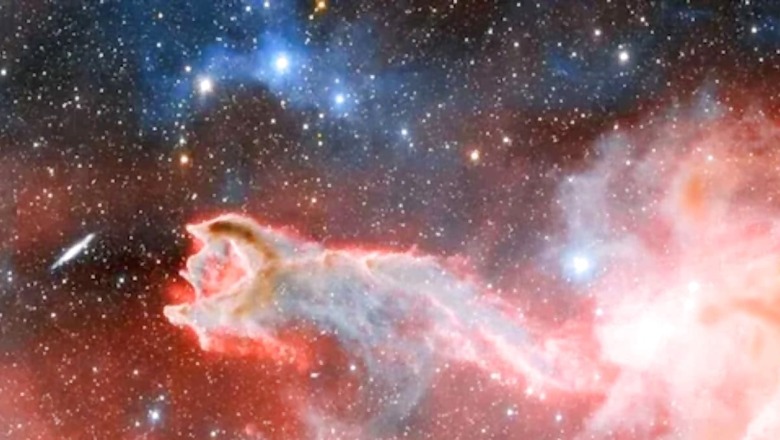
views
NASA or the National Aeronautics and Space Administration often shares images from deep space or faraway universes, places humanity can never reach. They have shared another image, which showcases a celestial body, resembling the shape of a hand.
As per the Live Science website, the image shows a “cometary globule” known as CG 4, popularly called the “God’s Hand.” It is located in the Gum Nebula, which is 13,00 light years away from our planet, within the constellation Puppis. This globule is the place where stars are born. Scientists call it a “cometary globule” because of its tail-like shape, resembling a comet. It also looks like an outstretched arm, hence earning the name “God’s Hand.
The image is taken from the Dark Energy Camera (DECam), mounted on the Blanco Telescope, in Chile. It shows the “arm” looking like a head which is about to swallow a galaxy, called the ESO 257-19. You can spot the glowing galaxy almost aligned with the globule, a chance happening, stated the website, as it is situated more than 100 million light-years away.
The formation of a cometary globule is still a mystery. According to some astronomers, their shape depends on the winds emitted by the hot stars close to it. While some others say that these could be spherical nebulas, which are deformed; a result of a supernova impact.
According to the National Optical-Infrared Astronomy Research Laboratory (NOIRLab), the Gum Nebula is a “huge patch of glowing gas”. It is believed to be the million-year-old remains of a supernova, consisting of numerous of these globules. The lab further states that Gum Nebula houses around 32 cometary globules.
DECam is a special camera which was used to capture the “God’s Hands,” since the Gum Nebula is large but faint. It is a 570-megapixel camera installed with 74 sensors. It sits atop the Víctor M Blanco Telescope, located in Cerro Tololo Inter-American Observatory in Chile.




















Comments
0 comment